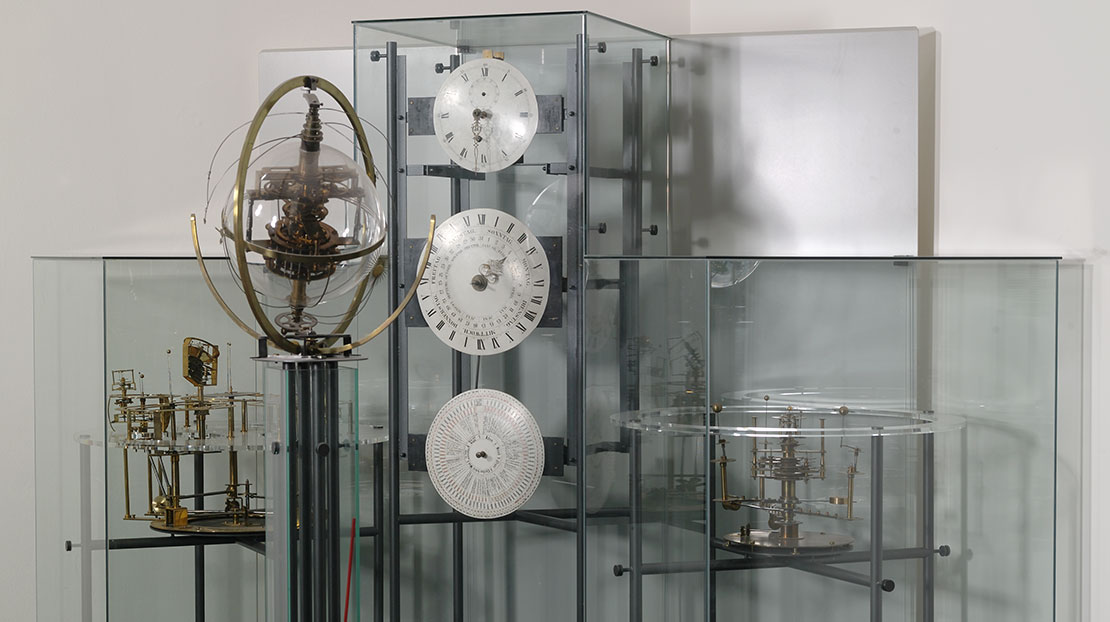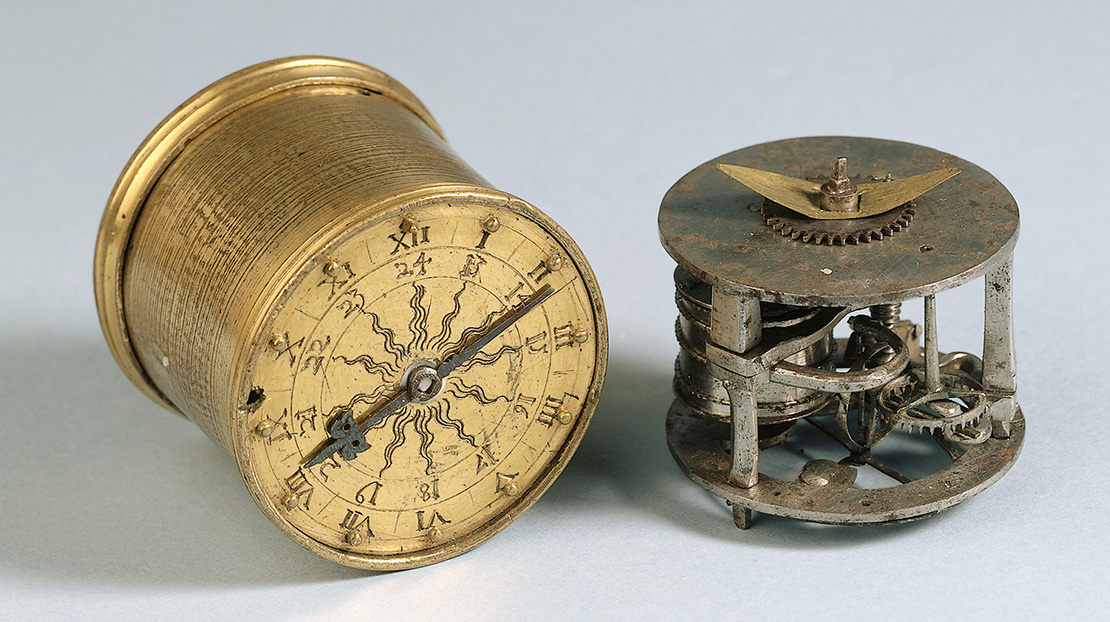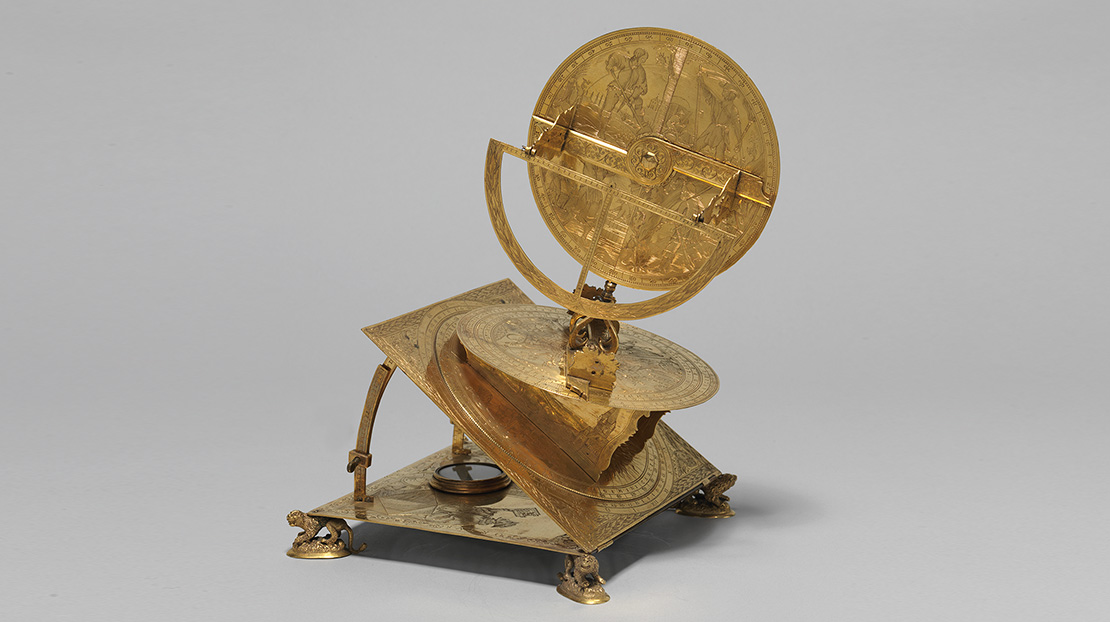Scientific instruments

Science awaits in the foyer
As a compact element of the exhibition, the "scientific instruments" section greets the visitor immediately at a prominent location in the gallery above the entrance hall. The objects are organized according to their main function: devices to measure time and space (especially a wide range of clocks), astronomical instruments, optical devices and, finally, a small selection from the GNM's notable collection of globes. In particular, the selection gives an overview of how the measuring techniques of portable devices have developed and been put to the test, but also repeatedly highlights the luxury aspect of what are primarily mere technical instruments. In the medium term, we intend to set up a permanent collection of scientific instruments in newly refurbished areas of the museum.
The largest part of the exhibition is made up of devices for measuring time, often operating on curious principles: elementary clocks such as hourglasses, star clocks and sundials, including many ivory diptych sundials typical of Nuremberg; mechanical clocks and watches ranging from the medieval tower clock and pendant watches of the 16th century to the Baroque pocket watch. The so-called "Peter-Henlein's-Watch" is a prominent exhibit despite disputes surrounding its historical authenticity. The development of surveying is represented through step counters and mining instruments as well as drafting instruments such as pairs of compasses. The museum's historical astrolabe holdings are of a quality unmatched in German-speaking countries, boasting 14 pieces, most of which are on show.
Examples of objects

Information and Services
Plan Your Visit
Opening Times
Location and Approach
GNM Museum Shop
FAQ
Library
Branches
Contact


